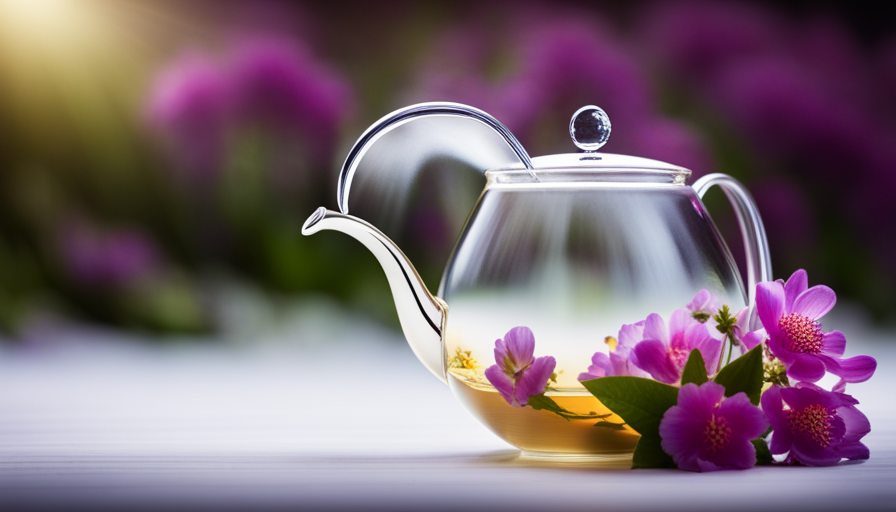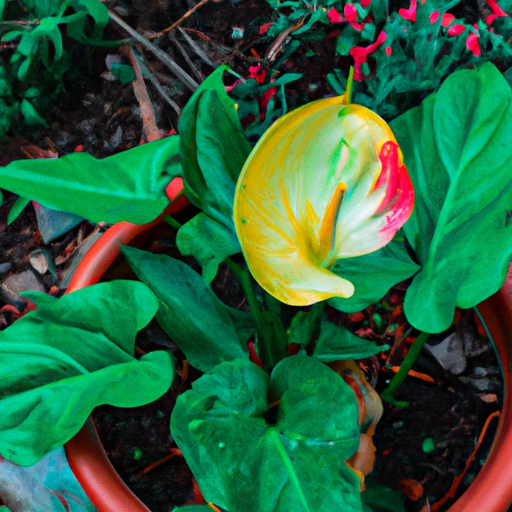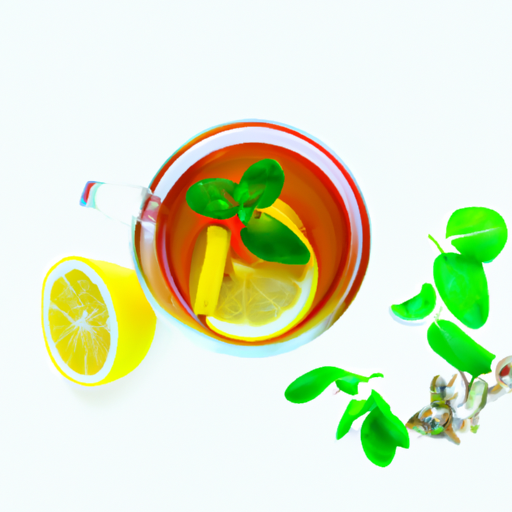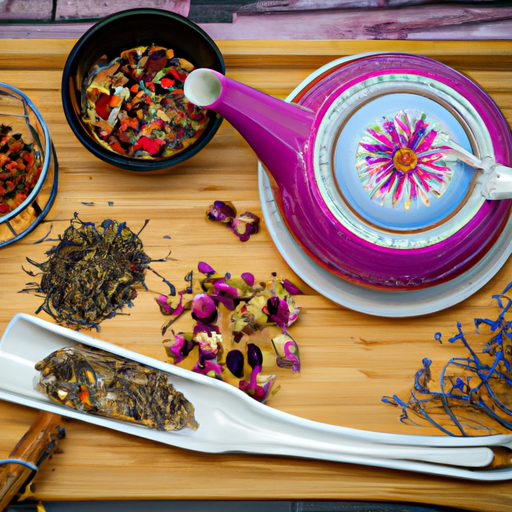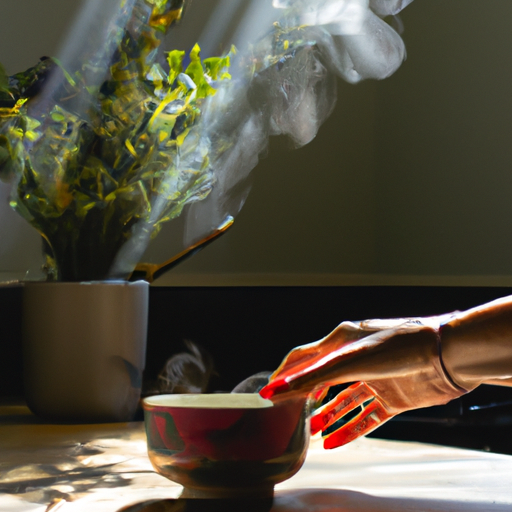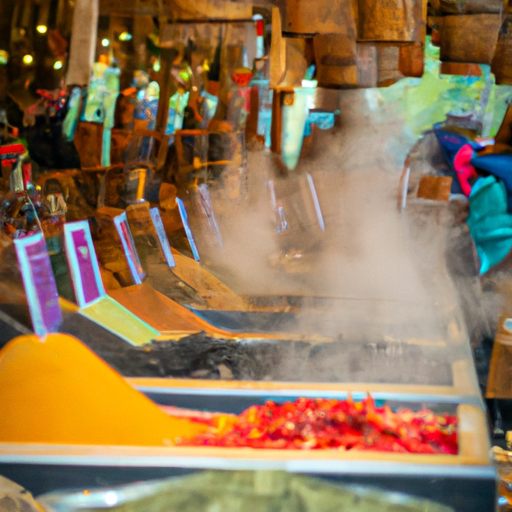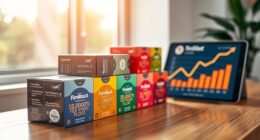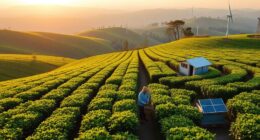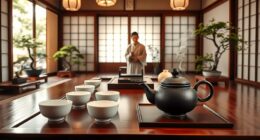Were you aware that the flavor and quality of your herbal tea can be significantly influenced by the water temperature? Yes, it’s true! Experts suggest that the optimal water temperature for brewing herbal tea may differ based on the specific type of tea being prepared.
In this article, I will guide you through the different types of herbal teas and their recommended brewing temperatures. Herbal teas are a popular choice for those seeking a soothing and flavorful beverage. From chamomile to peppermint, each herbal tea has its own unique characteristics and benefits. But to truly unlock their full potential, it is important to understand the role of water temperature in the brewing process.
Whether you prefer hot or cold brewing methods, I will provide you with tips and techniques to achieve the perfect cup of herbal tea. Additionally, I will explore the various factors that can influence water temperature, such as tea type, tea leaves, and personal preference.
So, grab your favorite herbal tea blend and let’s dive into the wonderful world of water temperature for brewing herbal tea!
Key Takeaways
- The ideal water temperature for brewing herbal tea varies depending on the type of tea, with different herbs requiring different temperatures.
- Recommended temperature ranges for brewing herbal tea are between 190°F (87°C) and 205°F (96°C).
- Adjusting the brewing time is crucial for achieving the desired flavor profile.
- Using a temperature-controlled kettle helps maintain water temperature precisely, ensuring consistency in taste and avoiding bitterness in herbal tea.
Understanding Different Types of Herbal Tea
Do you ever wonder how the temperature of water can bring out the unique flavors and aromas in your favorite herbal teas? Brewing methods and the temperature of water play a crucial role in extracting the optimal taste and health benefits from different types of herbal tea.
Whether you prefer chamomile, peppermint, or hibiscus, understanding the ideal brewing methods can enhance your tea-drinking experience.
Each type of herbal tea has its own recommended brewing method. Chamomile, for example, is best brewed with water that’s been heated to around 205°F (96°C). This temperature allows the delicate floral notes to infuse into the water, creating a soothing and calming cup of tea.
Peppermint, on the other hand, requires slightly hotter water, around 212°F (100°C), to extract its invigorating and refreshing flavors.
Hibiscus tea, known for its vibrant red color and tangy taste, benefits from water heated to 200°F (93°C) to achieve the perfect balance of tartness and sweetness.
By understanding the ideal temperature for brewing herbal tea, you can ensure that you get the most out of your tea-drinking experience.
The next section will delve into the specifics of the ideal temperature range for different types of herbal tea, allowing you to brew the perfect cup every time.
The Ideal Temperature for Brewing Herbal Tea
To achieve the perfect infusion of flavors, it’s essential to steep your chosen botanical blend at the precise degree of heat. When it comes to brewing herbal tea, the ideal temperature can vary depending on the type of herbs you’re using.
Generally, the recommended temperature range for brewing herbal tea is between 190°F (87°C) and 205°F (96°C).
Adjusting the brewing time is also crucial to achieve the desired flavor profile. Different herbs release their flavors at different rates, so it’s important to experiment with steeping times to find the perfect balance. Some delicate herbs may only require a few minutes of steeping, while others may benefit from a longer infusion.
In addition to the flavors, brewing herbal tea at the right temperature also ensures that you can enjoy the health benefits associated with the herbs. The heat helps extract the beneficial compounds from the herbs, such as antioxidants and phytochemicals, which can support digestion, boost the immune system, or provide relaxation.
Now that we understand the importance of temperature and brewing time, let’s delve into the various hot water brewing techniques that can help us achieve the perfect cup of herbal tea.
Hot Water Brewing Techniques
Immerse yourself in the art of brewing, where the dance of heat and time transforms nature’s bounty into a symphony of flavors and wellness. When it comes to brewing herbal tea, using hot water is essential to extract the full benefits of the herbs.
Here are three alternative brewing methods that can enhance your tea experience:
-
Infusion: This method involves pouring hot water over the herbal tea leaves and allowing them to steep for a specific amount of time. The high temperature helps release the flavors and medicinal properties of the herbs, creating a robust and aromatic brew.
-
Decoction: In this technique, the herbs are simmered in hot water for a longer period. This method is particularly useful for tougher plant materials, such as roots and barks, as it helps extract their beneficial compounds effectively.
-
Steam infusion: This method involves using hot water to create steam, which is then used to infuse the herbs. The steam gently opens up the herbal leaves, allowing for a more delicate extraction of flavors and nutrients.
Transitioning to the subsequent section about cold water brewing techniques, it’s important to explore alternative methods that can create a different flavor profile and experience.
Cold Water Brewing Techniques
Explore a refreshing realm of flavor as you embrace the art of brewing with chilled water, unlocking a crisp and invigorating infusion of nature’s goodness. Cold water infusion is a unique brewing technique that offers a distinct taste profile compared to traditional hot water brewing methods. By steeping herbal tea in cold water for an extended period of time, you allow the flavors to slowly infuse, resulting in a smoother, more delicate taste.
Not only does cold water brewing create a different flavor experience, but it also offers several health benefits. The slower extraction process in cold water helps to preserve the natural antioxidants and nutrients present in herbal teas. These compounds are known for their potential to boost the immune system, aid digestion, and promote overall well-being. Additionally, cold water brewing reduces the extraction of tannins, which can result in a less bitter taste compared to hot water brewing.
As we delve into the factors that affect water temperature, it’s important to understand how the temperature of the water can impact the overall brewing process.
Factors That Affect Water Temperature
Dive into the fascinating world of water temperature and unlock the secrets to perfecting your brewing process. When it comes to herbal tea, the temperature of the water you use can have a significant impact on the infusion. Different heating methods can yield different results, so it’s important to understand how temperature affects the flavors and properties of your tea.
One factor that affects water temperature is the type of heating method you choose. Boiling water, for example, can result in a stronger and more robust infusion, whereas using water that’s too hot can lead to a bitter or burned taste. On the other hand, using water that’s too cold may not extract the full range of flavors from your herbal tea.
Another factor to consider is the impact of water temperature on the specific herbs and ingredients in your tea. Some herbs require higher temperatures to release their full flavor, while others are more delicate and should be brewed at lower temperatures to avoid overpowering or damaging their delicate compounds.
Understanding these factors and experimenting with water temperature can help you achieve the perfect cup of herbal tea.
In the next section, we’ll explore the art of experimenting with water temperature and uncover the nuances of brewing herbal tea to perfection.
Experimenting with Water Temperature
When experimenting with water temperature for brewing herbal tea, I found it important to find my preferred brewing temperature.
By adjusting the temperature to suit my personal taste, I was able to achieve the perfect balance of flavor and aroma in my tea.
Furthermore, exploring the effects of different temperatures on flavor profiles allowed me to discover new and exciting nuances in my herbal tea experience.
Finding Your Preferred Brewing Temperature
Contrary to popular belief, figuring out your preferred brewing temperature for herbal tea isn’t as straightforward as you might think. It requires some trial and error to find the optimal temperature that brings out the best flavors in your tea. One helpful tool in this process is a temperature-controlled kettle, which allows you to set and maintain the water temperature precisely.
Here are a few reasons why using a temperature-controlled kettle can be beneficial:
-
Consistency: With a temperature-controlled kettle, you can ensure that each cup of tea is brewed at the same temperature, resulting in a consistent taste.
-
Precision: Different types of herbal teas have different optimal brewing temperatures. A temperature-controlled kettle allows you to adjust the temperature to match the specific tea you’re brewing.
-
Avoiding bitterness: Brewing herbal tea at too high a temperature can lead to a bitter taste. A temperature-controlled kettle helps you avoid this by keeping the water at an optimal temperature.
By using a temperature-controlled kettle, you can fine-tune your brewing process and discover the temperature that suits your personal taste preferences.
Adjusting Temperature for Personal Taste
Fine-tune your brewing experience by adjusting the temperature to cater to your personal taste preferences. Finding the perfect temperature for your herbal tea is crucial in achieving the desired flavor and aroma. Some people prefer a hotter brew for a stronger taste, while others enjoy a milder flavor with a lower temperature. To help you navigate through the temperature adjustments, consider the following table:
| Temperature | Flavor Profile |
|---|---|
| 180°F | Light and delicate |
| 190°F | Balanced and smooth |
| 200°F | Full-bodied and robust |
| 210°F | Bold and intense |
Experimenting with different temperatures allows you to discover the nuances each range brings to your cup. In the next section, we will explore the effects of different temperatures on flavor profiles to further enhance your tea brewing experience.
Exploring the Effects of Different Temperatures on Flavor Profiles
Little did I know that adjusting the heat level while brewing herbal tea could unleash a symphony of flavors and aromas. It took my taste buds on an unexpected journey. By experimenting with different water temperatures, I discovered a whole new world of herbal tea flavors.
Lower temperatures, around 160°F (71°C), tend to produce a milder, more delicate flavor profile. On the other hand, higher temperatures, around 200°F (93°C), bring out stronger, bolder notes.
Adjusting the temperature can also impact the health benefits of herbal tea. For example, brewing at lower temperatures may help retain more antioxidants. Conversely, higher temperatures can enhance the extraction of certain medicinal compounds.
Understanding the effects of different temperatures allows me to tailor my brewing process. Now, I can create the perfect cup of herbal tea that suits my personal taste preferences and health goals.
Frequently Asked Questions
What are some common herbal teas that can be brewed with hot water?
Some common herbal tea flavors include chamomile, peppermint, and hibiscus. These teas are usually brewed with hot water to release their flavors and health benefits.
Chamomile tea is known for its calming properties and can aid in digestion.
Peppermint tea is refreshing and can help with digestion and headaches.
Hibiscus tea is rich in antioxidants and can support heart health.
Brewing these teas with hot water allows for optimal extraction of their beneficial compounds.
Can I brew herbal tea with cold water?
Experimenting with different brewing methods, I decided to steep herbal tea in cold water. To my surprise, the outcome wasn’t satisfying. The flavors lacked depth and the infusion was weak. It was as if the herbs were taking a leisurely stroll instead of a vigorous swim. Cold water simply didn’t have the power to draw out the full essence of the herbs.
So, for a truly flavorful and aromatic cup of herbal tea, stick to brewing it with hot water.
How does the temperature of the water affect the taste of herbal tea?
The temperature of water has a significant impact on the flavor of herbal tea. Different types of herbal tea require specific water temperatures to bring out their unique flavors.
For delicate herbal teas, like chamomile or mint, using water that is too hot can result in a bitter taste. On the other hand, robust herbal teas, such as ginger or hibiscus, benefit from hotter water to extract their full flavors.
Choosing the right water temperature is crucial for a satisfying herbal tea experience.
Are there any specific techniques for brewing herbal tea with hot water?
When it comes to brewing herbal tea, there are a few techniques that can enhance the flavor and aroma. Steeping the tea in hot water is one of the most effective techniques. The hot water helps to extract the beneficial compounds from the herbs, resulting in a more flavorful and aromatic brew.
Additionally, using hot water can also help to release the natural oils and flavors of the herbs, creating a more well-rounded and satisfying tea experience.
Can I experiment with different water temperatures to find the ideal one for my herbal tea?
Sure, experimenting with different water temperatures is a great way to find the perfect brewing time for herbal tea. By varying the temperature, you can unlock different flavors and aromas in your tea.
For example, lower temperatures can result in a lighter, more delicate brew, while higher temperatures can bring out stronger and bolder flavors. It’s all about personal preference, so don’t be afraid to play around and find what works best for you.
Conclusion
After exploring the various types of herbal tea and the ideal water temperatures for brewing, I’ve come to realize that finding the perfect balance is like creating a symphony of flavors. Just like a skilled conductor brings together different instruments to create a harmonious melody, the right water temperature is crucial to extracting the essence of the herbs.
By understanding the delicate nuances of each tea and experimenting with water temperature, we can unlock a world of rich flavors and truly appreciate the art of herbal tea brewing. So, let’s embark on this culinary adventure and savor every sip, for every cup holds a hidden symphony waiting to be discovered.

